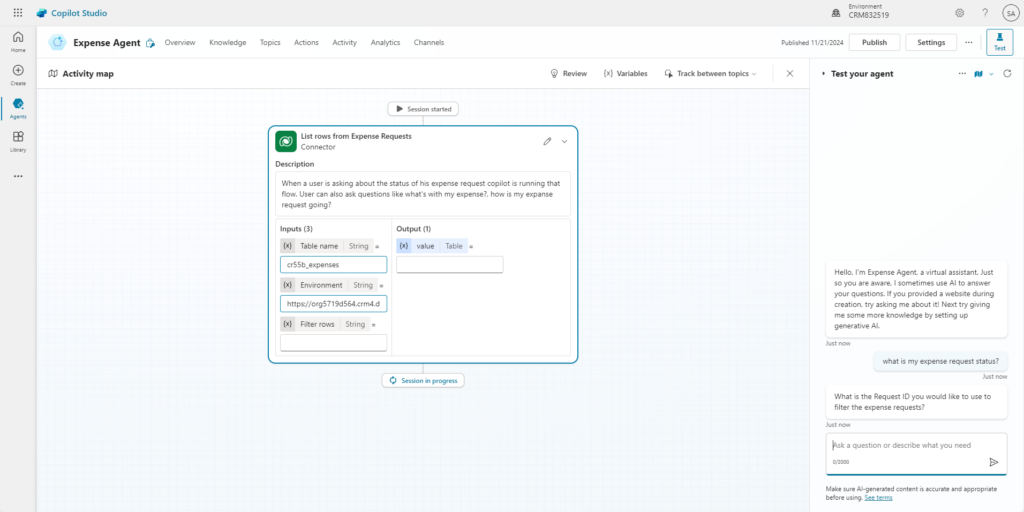Autonomous Agents in Copilot Studio


New Action and Trigger Features
Now Your Agent is fully AI powered. To give him some “skills” You can use Actions. Those are the steps that Agent will take to help Your Users. For example, an Action can be running a Power Automate Cloud Flow or go and look for a specific record in a specific Dataverse Table via List rows actions. Your Agent can also react to a specific event with Triggers. So, Your Agent can start when a new record was created.
Going back to actions. There are some attributes that are assigned to each action. Each of them will have Name and Description, Inputs and Outputs, some of them will let You decide which authentication to choose when using this action. You will be able to decide if an Agent should use its creator credentials or Users credentials.
When it comes to descriptions – it is very important to properly describe all of Your items like actions, triggers, knowledge sources and variables. These descriptions will be used as a instruction for the Agent when it looks for a proper step to take. So, think about them as a prompts for AI model. Let’s look at specific action details. We will look to List rows action.

- Here You can define the Name and Displayed name for Your new action
- Here You are describing the action. Remember AI will check that description when it looks for the way to respond to a User’s request!
Now we need to define some Inputs and Outputs for our Action.

List rows Action: Managing Variables and Filters

So, we are pointing out here that AI should take Request ID provided by the User and Filter Expenses table by the column cr55b_expense1 (which is Expense ID column) using Request ID provided by the User.
And last but not least we need to decide how the Output and the answer should look like.

- Description – instruction for AI model how to create the message for a User
- How the message will be created. It might be done by Agent or You can create Your own message.
And in the end how does it work? User is asking the question

Activity Map: Analyzing Generative Agent Sessions
As You can see new session was started and we can look on Activity map. It is specific for those Generative Agents. It is not the Agent Creator orc trigger phrases that is deciding which action to take. That is why we can review each session after it was done how our Agent was selecting proper knowledge sources.

You can see that Agent was able to extract proper Request ID from entire User answer and use it as a part of Data formula for filtering the rows. You can also see that User has received more information than just only Request Status.
Summary
- We have created an Action for Autonomous Agent
- With its proper description Agent was able to choose that action in response to Users question
- Agent was able to extract Request ID from entire text provided by User
- Agent was able to find proper row in a selected table and respond to a User with its details.
With this Agent it was not trigger phrases for Topics that were used to prepare the answer for the Users request. It was Agent with its AI model who decided which way to go and which knowledge source to use.
You need to remember that those are features In Preview. And that means that some errors might occur.
Actions allow You to:
- Create Your Agents faster,
- Use End User Access rights when running queries to SharePoint or Dataverse tables

See the latest insights from Netwise
How Customer Data Platforms support a unified customer view
How Customer Data Platforms support a unified customer view When discussing customer strategy with clients, I find the terms CDP and Customer 360° used very often. They have become quite common buzzwords in many industries. However, while everyone wants that…
Read moreCreative use of relationship behaviors in Dynamics 365: How removing data from the Target field saved our project
In this article, we show how a unique client need led to a simple, creative solution beyond standard Dataverse features.
Read moreWhat’s new in Microsoft Dynamics 365 Field Service Mobile? (2025 Guide)
Discover new D365 Field Service Mobile updates enhancing performance and offline reliability for field teams.
Read more

